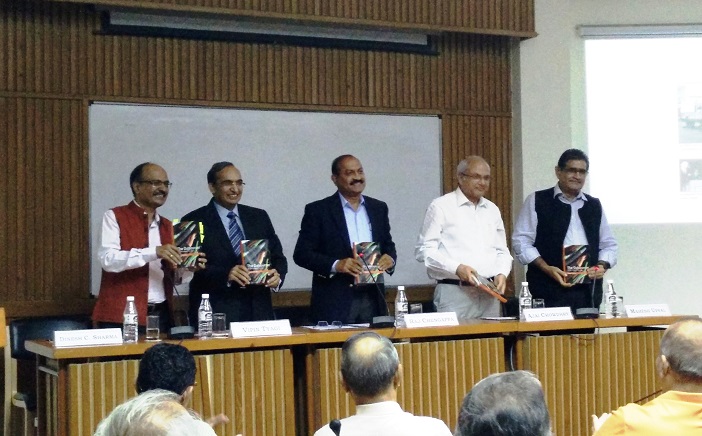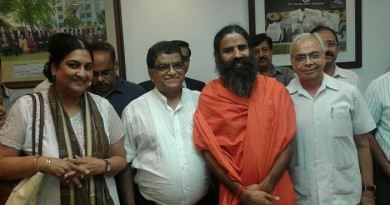A Book on IT ‘Chronic’les Bureaucracy as Incorrigible ‘Hardware’
The ‘The Outsourcer’ traces history of IT industry’s shaping in India
A Book on IT ‘Chronic’les Bureaucracy as Incorrigible ‘Hardware’
New Delhi, October 19: But for stubbornness of bureaucracy, Indian digital scenario would have been much more sparkling than it is today.
This unfailingly juts out from the matrix of an excellent book ‘The Outsourcer’ by Dinesh C. Sharma, underlining the formidable IT scenario scripted by India. But his real triumph lies in diagnosing the ‘virus’ that constantly tried to hobble its potential growth in India. Without mincing words, he has stressed the fact the India scripted a stupendous IT success story in spite of its obdurate bureaucracy.
Primarily an eminent health writer, Mr. Sharma opines that red tape has been a ‘chronic’ condition in India and still ails its IT sector. If India missed some buses through its journey on digital highway, this book puts the blame on its bureaucracy’s stasis all through. The book touches on IT industry’s yearning for seeing bureaucracy morph into ‘software’ so that India’s IT potential gets a real boost.
Due diligence is the hallmark of this book. A must read for IT aficionados, the book has got rave reviews among leaders of IT. If you are looking for a non- partisan ‘historian’, the writer Mr. Sharma, a renowned science and health columnist, certainly makes the cut. Mark the words of Vipin Tyagi, executive director, Centre for Development of Telematics (C-DoT)- ‘As for credibility, the book stands at highest. In the inaugural of the book in India International centre, he said, ‘Mr. Sharma has most excellently delineated India’s IT journey till date. He has started from ab-initio when first computer came to India.’
 The rise of the information technology industry in India is a remarkable economic success story, but, often it is believed to be a result of the 1991 liberalization process. But ‘The Outsourcer’ traces roots of this revolution to times right after the independence.
The rise of the information technology industry in India is a remarkable economic success story, but, often it is believed to be a result of the 1991 liberalization process. But ‘The Outsourcer’ traces roots of this revolution to times right after the independence.
HCL founder Ajai Chowdhry said the role of the state in nurturing the industry through favorable policy environment was as important as entrepreneurial spirit of Indian engineers. Mr. Choudhary branded the book a first full history of It in India. He said, ‘Dinesh has connected all the dots and brought all milestones together in this excellent book’.
Vipin Tyagi said the role played by organizations like the Electronics Corporation of India Limited and others in developing design skills necessary for computer industry was critical. Necessary technological skills now exist to take the fruits of information and communication revolution to common people. Mahesh Uppal, telecom consultant, also spoke while Raj Chengappa, Group Editorial Director of the Indian Today Group, moderated the discussion.
‘The history of computing and information technology has to be viewed in the larger context of science and technology development in India. The story begins in the years leading to India’s freedom in August 1947, when the foundation of the science and technology infrastructure for an independent nation was laid,’ Sharma said.
The efforts made by scientists and the institutions they created helped in exposing a large number of Indian scientists and engineers to computer science and technology in the initial period, according to the book. Program writing skills useful for commercial applications developed through interaction with mainframe and minicomputer makers from the West, mainly America. In the hardware sector, restrictions on import of technology, components and parts forced Indian firms to develop their own design skills. The growth trajectory started heading north when economic and industrial policies shifted gears – from socialist and mixed-economy approach to private sector-led liberalization. The state’s role gradually changed from being a regulator and player to being a facilitator and champion of private industry.


